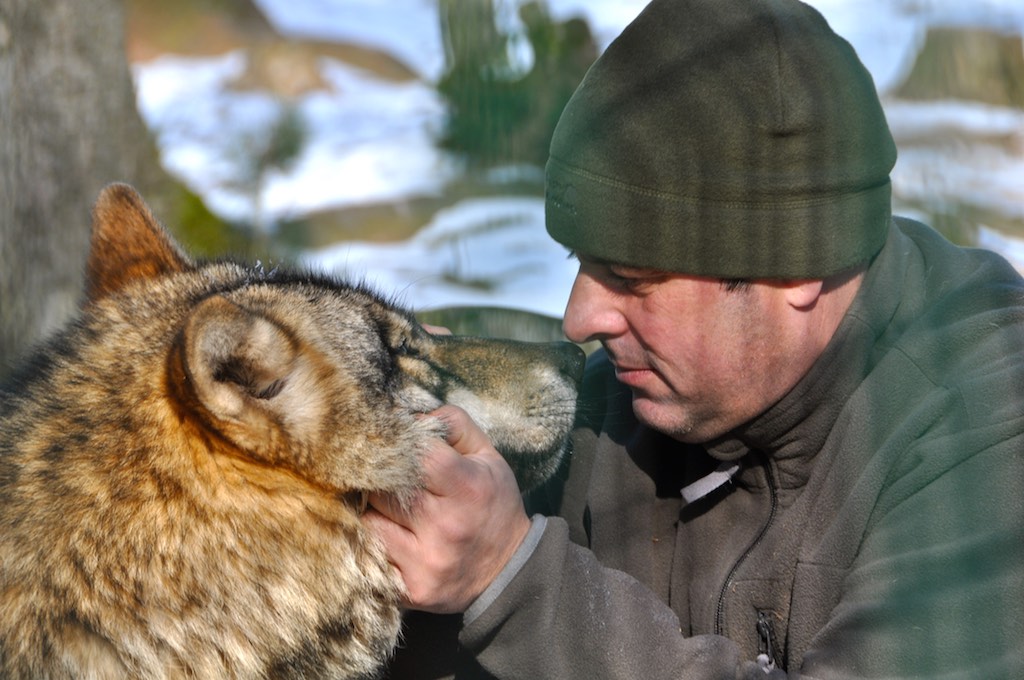
Steckbrief Europäischer Wolf
Der wissenschaftliche Name des Europäischen Grauwolfes ist Canis lupus lupus.
[three_columns_one]
Systematik Klasse:
[/three_columns_one][three_columns_two_last]Säugetiere
[/three_columns_two_last]
[three_columns_one]
Ordnung:
[/three_columns_one][three_columns_two_last]Raubtiere (Carnivora)
[/three_columns_two_last]
[three_columns_one]
Familie:
[/three_columns_one][three_columns_two_last]Hundeartige (Canidae, 13 Gattungen mit 38 Arten)
[/three_columns_two_last]
[three_columns_one]
Gattung:
[/three_columns_one][three_columns_two_last]Echte Hunde (Canis, 8 Arten)
[/three_columns_two_last]
[three_columns_one]
Art:
[/three_columns_one][three_columns_two_last]Grauwolf (Canis lupus lupus)
[/three_columns_two_last]
[three_columns_one]
Größe Schulterhöhe:
[/three_columns_one][three_columns_two_last]60-90 cm
[/three_columns_two_last]
[three_columns_one]
Kopf-/Rumpflänge:
[/three_columns_one][three_columns_two_last]100-140 cm
[/three_columns_two_last]
[three_columns_one]
Rutenlänge:
[/three_columns_one][three_columns_two_last]30-70 cm
[/three_columns_two_last]
[three_columns_one]
Fell:
[/three_columns_one][three_columns_two_last]Grau-braun bis grau-gelb mit hellen Zeichnungen, dunkel abgesetzter Schultersattel und Rücken, herabhängende, buschige Rute
[/three_columns_two_last]
[three_columns_one]
Alter:
[/three_columns_one][three_columns_two_last]10-13 Jahre in natürlicher Umgebung
[/three_columns_two_last]
[three_columns_one]
Nahrung Wild:
[/three_columns_one][three_columns_two_last]Rehe (52,6%), Wildschweine (18,3%), Rot- (21,3%) und Damwild (1,9%); wenn leichter Zugang: Nutztiere (0,8%), selten auch Hasenartige (3,9%) (Prozentangaben aus dem Wolfsgebiet Oberlausitz – Stand: Januar 2012)
[/three_columns_two_last]
[three_columns_one]
Zusammenleben:
[/three_columns_one][three_columns_two_last]Rudel bestehend aus Eltern, Jährlingen und Welpen; Abwandern der Jungwölfe aus dem Rudel, wenn geschlechtsreif (ca. 2 Jahre alt)
[/three_columns_two_last]
[three_columns_one]
Wurf:
[/three_columns_one][three_columns_two_last]Im Frühjahr zwischen 1-11 Welpen; Schwangerschaft über 2 Monate (Paarungszeit Februar/März)
[/three_columns_two_last]
[three_columns_one]
Pfotenabdrücke:
[/three_columns_one][three_columns_two_last]Zwischen 7-10 cm lang
[/three_columns_two_last]
[three_columns_one]
Markierungen:
[/three_columns_one][three_columns_two_last]Harn, Losung (Kot), Duftstoffe
[/three_columns_two_last]
[three_columns_one]
Kommunikation:
[/three_columns_one][three_columns_two_last]Körpersprache, Mimik, Laute, Heulen
[/three_columns_two_last]
[three_columns_one]
Reviergröße:
[/three_columns_one][three_columns_two_last]150-350 km2
[/three_columns_two_last]
[divider]
Quelle: Nabu, Broschüre
„Willkommen Wolf!”
[divider]